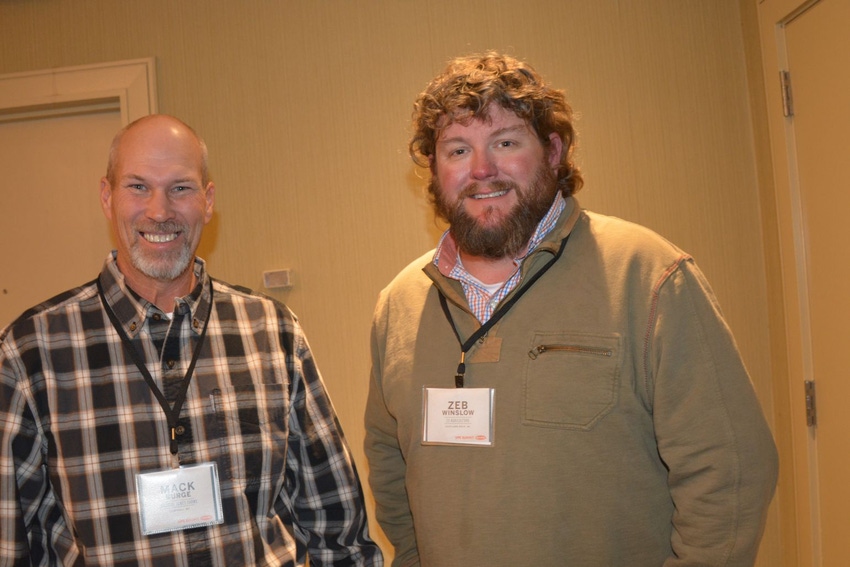
In its December report, USDA pegged the national per acre harvested yield at 902 pounds. The strong yield number indicates the good year many cotton farmers had in 2017.
Conversations with cotton growers who are part of the Deltapine New Product Evaluator program and attended the Deltapine NPE Summit in Savannah, Ga., in December confirm that most U.S. cotton farmers wrapped up a great year in terms of yield and quality and are looking forward to a repeat performance in 2018.
Zeb Winslow, a Scotland Neck, N.C. grower, said he and his neighbors across Halifax County in northern North Carolina saw excellent yields and quality in 2017 due in a large part to cooperative weather at harvest. Winslow and his family were recognized at the NPE Summit for achieving top yields with the new variety Deltapine 1851 B3XF. They saw yields of1,401 pounds per acre with the variety.
“We’re using different cover crops strategies which helps with moisture retention and weed control. DP 1851 came out of the ground really well. It’s a strong early season variety,” Winslow said.
Winslow likes to target his varieties to different soil types, putting his best performers on his best ground. Last year, the varieties DP 1639, DP 1646 and DP 1725 all worked well for the family. “The NPE program gives us a leg up, being able to see varieties a year earlier and evaluating how they do on our land,” he said.
“Yield is first and foremost on everybody’s mind when it comes to varieties so that yield number is the first thing you have to look at, but you have to look at your soils individually. If you have a tough field, you might look for a variety that does better on tough land compared to good land,” he said.
Fiber quality is important to Winslow as well. He calls it a “close second” to yield, but yield is still the driver in variety selection.
Like Winslow, Campbell, Mo., Grower Mack Burge looks to yield first when choosing varieties. And like Winslow, Burge also enjoyed a banner year in 2017. In fact, he was recognized for achieving a whopping yield of 2,320 pounds per acre for the new variety DP 1823 NR B2XF.
Burge credits tissue sampling and applying fertilizer throughout the year for achieving maximum yields. Last year, he applied nitrogen four times and potash three times. Plus, cooperative weather throughout the year certainly helped.
“Fertility is key. We kept feeding the plants throughout the season,” Burge said.
In West Texas, Gerald Berry, manager of Freimel Farms in Panhandle, also reports a really good cotton crops thanks in part to good weather and good emergence across the board. Berry was recognized for yields of 2,143 pounds per acre on the new variety DP 1820 B3XF.
Like Winslow and Burge, Berry plants many varieties. He also says diversity is key. He likes to spread risk on the 13,000-acre farm by planting wheat and corn in addition to cotton.
“On our dryland, we rotate between wheat and cotton. On our irrigated land, we are half corn and half cotton. Rotation keeps us in business. We are going to stay with our rotations,” he said. “Using center pivot irrigation allows us to control our own destiny,” he said.
Berry, Burge and Winslow all plan to stay with cotton and look to plant more this year since prices appear favorable. “With 70 to 75 cent cotton, I’m pretty optimistic right now,” Berry said.
About the Author(s)
You May Also Like






